Oil spills on the factory floor are a nightmare. They are messy, dangerous, and expensive. Are you tired of constant cleanup, safety hazards, and potential fines? A spill pallet can be the simple answer to these big problems.
A spill pallet is a safety device designed to safely contain leaks and drips from drums and containers of oils, chemicals, and other liquids [1]. It stops harmful materials from contaminating the environment or the workplace. This helps you meet safety rules and protect both people and the planet.
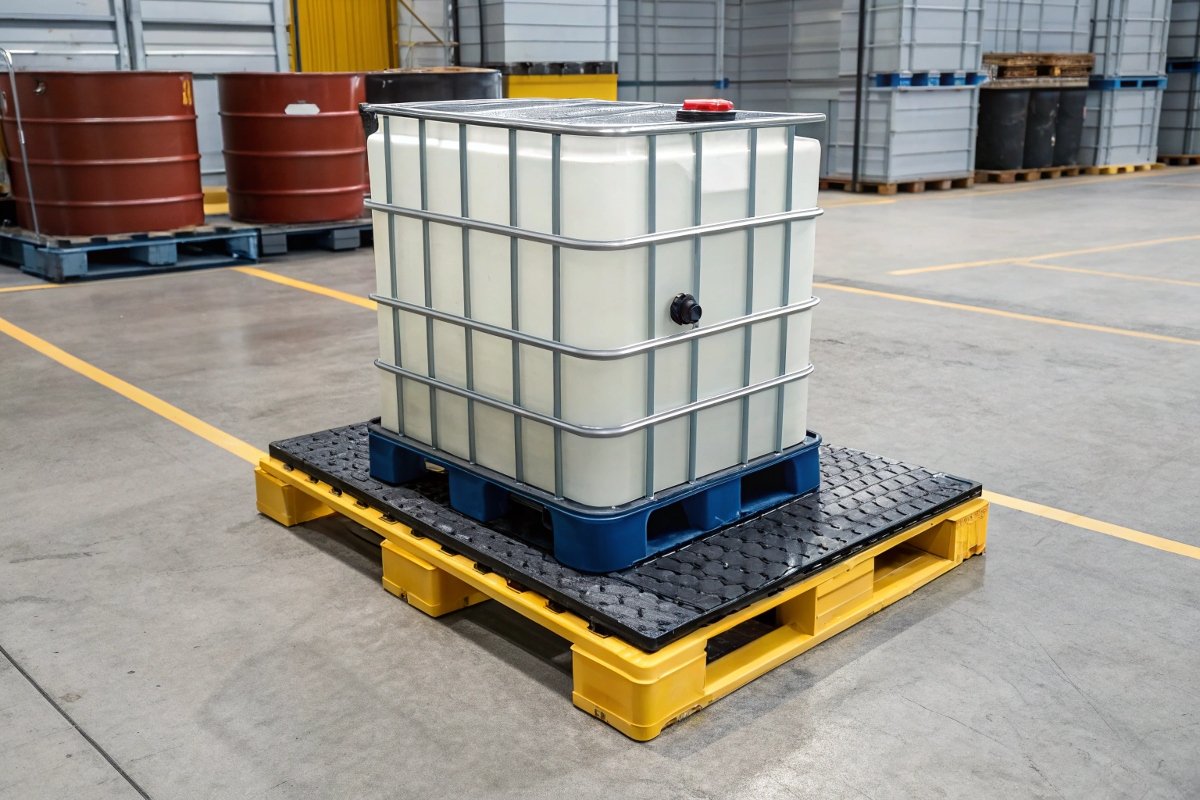
As an industry veteran, I have seen too many companies struggle with spill control. They often do not realize the real value of simple tools until something goes wrong. Let’s look closer at how spill pallets help keep workplaces safe.
What are the OSHA rules for pallets?
Dealing with chemicals means following strict rules. You cannot just store liquids anywhere. Are you worried about failing an OSHA inspection or facing big fines? Understanding OSHA rules [2] for spill containment is key to staying compliant and safe.
OSHA, the Occupational Safety and Health Administration [3], sets rules for storing hazardous materials [4] to protect workers from chemical exposure and fires. While not explicitly naming "spill pallets," OSHA requires employers to have proper spill prevention and control measures in place, like secondary containment [5], to manage hazardous liquid spills effectively.
From my early days in manufacturing, I quickly learned that safety is not just a buzzword; it is the foundation of any good operation. OSHA rules, especially those around hazardous materials, are there for a reason: to protect people. Even though OSHA does not specifically say "buy a spill pallet," their general industry standards, like 29 CFR 1910.106 on flammable and combustible liquids [6], demand secondary containment for stored liquids. This means if your primary container leaks, there must be a backup system to catch it. Spill pallets directly address this need.
When I started my PVC coated fabric factory [7], these regulations became even more real to me. They define the minimum acceptable safety standards. For instance, OSHA requires that you have enough capacity in your secondary containment to hold at least 10% of the volume of all containers stored, or 100% of the volume of the largest container, whichever is greater [8]. This is why choosing the right size spill pallet is so important. These rules are not just a burden. They are a framework for responsible operations. They highlight a shift towards a more developed environmental consciousness. Just as the foreign enterprises bring their safety cultures to new markets, these regulations push everyone to adopt better practices. This is a clear sign of progress and something I deeply believe in.
| OSHA Standard Reference | Key Requirement | How Spill Pallets Help |
|---|---|---|
| 29 CFR 1910.106 | Flammable and Combustible Liquids: Secondary containment to prevent spills from reaching drains or igniting [9]. | Provides a barrier to contain leaks, reducing fire risk and environmental contamination. |
| 29 CFR 1910.120 | Hazardous Waste Operations and Emergency Response (HAZWOPER) [10]: Protecting workers during chemical incidents. | Offers immediate containment, reducing exposure during spills and making clean-up safer. |
| 29 CFR 1910.1450 | Occupational Exposure to Hazardous Chemicals in Laboratories [11]: Ensuring safe chemical handling in labs. | Containing chemical spills to protect lab workers and maintain safety protocols. |
| 29 CFR 1910.22 | General Requirements for Walking/Working Surfaces: Keeping floors clear and safe [12]. | Keeps floors clear of liquid hazards, preventing slips, trips, and falls. |
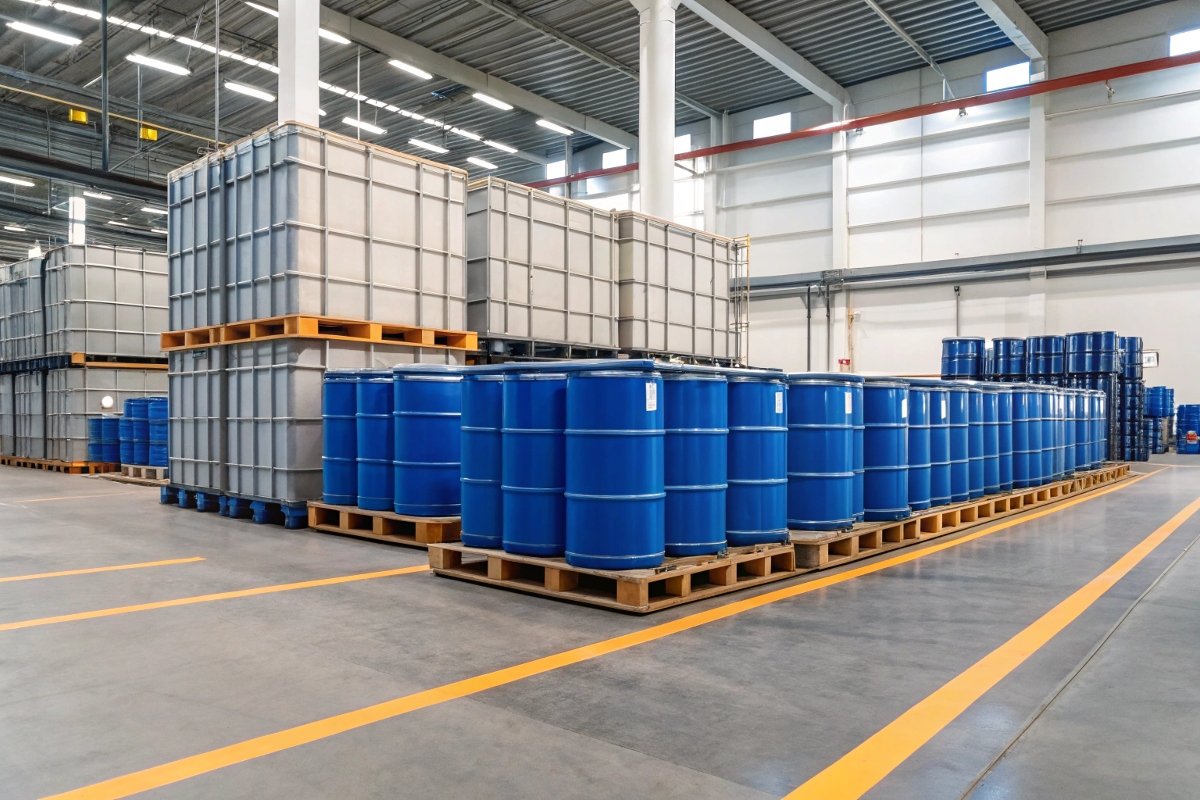
What is the difference between a spill deck and a spill pallet?
Many people use the terms "spill deck" and "spill pallet" interchangeably. But they are not always the same. Are you unsure which one you really need for your spill control? Knowing the distinct features of each helps you make the best choice.
A spill pallet is generally a portable unit designed to store one or more drums, featuring an integrated containment sump [13]. A spill deck, on the other hand, is a lower-profile, modular system that can be connected to cover larger areas, often used for smaller containers or to create custom containment zones, and may require a separate ramp for access [14].
When I started making these products, I quickly realized that customers often had specific needs. Spill pallets are like individual protective islands for drums. They are typically taller. They need a large sump directly underneath the drumming surface to catch leaks. Their structure is robust, meant to handle the weight of 55-gallon drums. This makes them ideal for storing drums where you might need to move them around or isolate their contents.
Spill decks, in contrast, are much more flexible. They are lower to the ground. You can connect many modules together to create a continuous containment area that suits your space. I have seen clients use spill decks to create an entire "spill-proof room" for their chemical storage. They are also great for smaller containers, buckets, or even just as a safe area for dispensing. Because they are often lower, you might need a ramp if you are rolling drums onto them.
The choice often comes down to portability versus expandability. If you primarily store a few drums at a time and need to move them, a spill pallet is often more practical. If you have a dedicated chemical storage area and need flexible, customizable containment for many different container sizes, then a spill deck might be better. This difference is important for me. My goal has always been to give customers the right tool for their specific job. Because the goal is not just to sell products, it is to provide solutions that meet stringent safety standards. This is a global trend. Even in China, local businesses are learning these nuances from international partners. We are not just supplying goods; we are helping to build a culture of safety.
| Feature | Spill Pallet | Spill Deck |
|---|---|---|
| Portability | High; typically moved with a forklift | Lower profile; modular, often stationary once connected |
| Height | Taller, deep sump for drum containment | Lower profile, often requiring a ramp for drums |
| Capacity | Designed for 1-4 drums, specific volume | Modular, scalable to cover large areas |
| Usage | Individual drum storage, dispensing points | Custom containment zones, smaller containers |
| Sump | Integrated, often single unit | Modular sumps, connected for larger capacity |
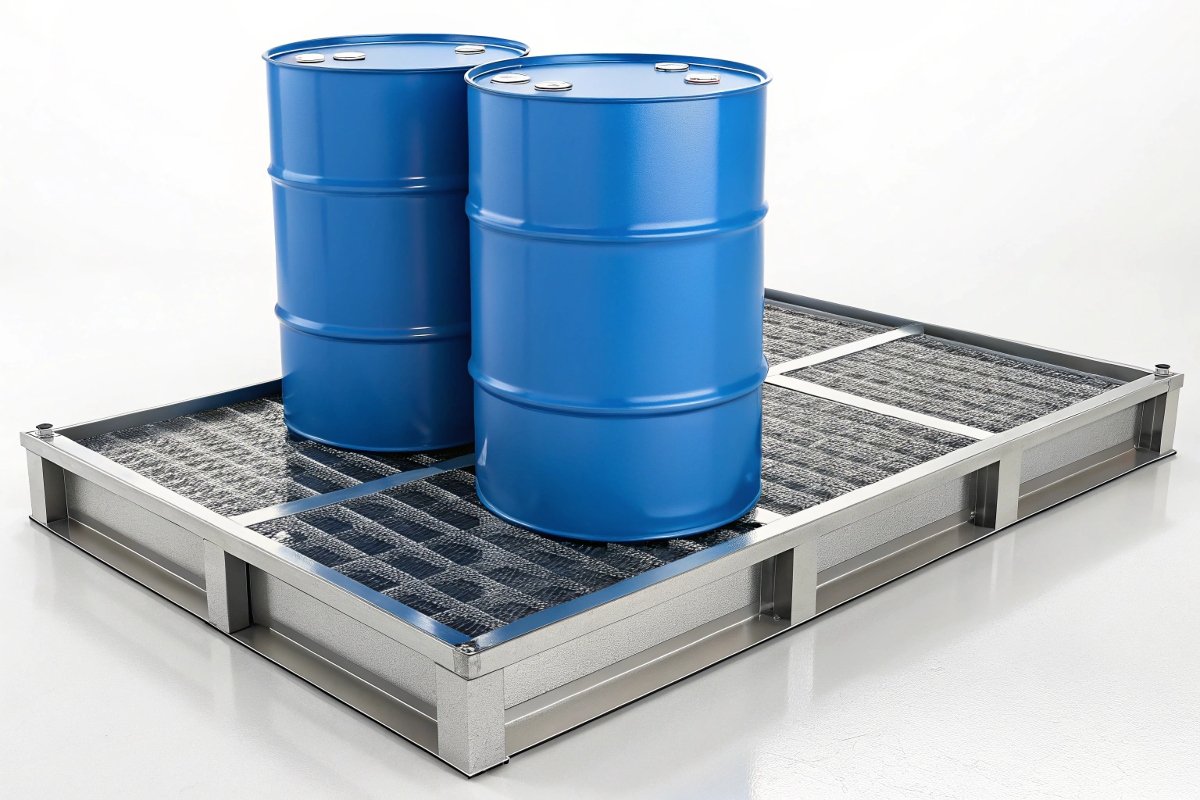
What size spill containment pallet do I need?
Buying a spill pallet seems simple, but getting the size right is crucial. Is your current spill containment too small, leaving you vulnerable to fines? Choosing the correct size ensures you meet regulations and protect your workplace.
The size of spill containment pallet needed depends on the "110% rule" or "10% of total volume / 100% of largest container" rule [15], often driven by regulations like EPA 40 CFR 264.175 [16]. You must ensure the pallet’s sump can hold at least 10% of the total volume of all containers stored on it, or 100% of the volume of the single largest container, whichever is greater.
This question comes up all the time. When I work with agents, we always emphasize the "10%/100% rule." It sounds a bit technical, but it is simple. If you have four 55-gallon drums, the total volume is 220 gallons. 10% of that is 22 gallons. But the largest single container is 55 gallons. So, your spill pallet must have a sump capacity [17] of at least 55 gallons. This is a fundamental requirement. It ensures that even if the worst-case scenario happens—one entire drum leaks—the spill pallet can contain it completely.
We often guide our clients through this calculation. It is not just about meeting a number; it is about providing genuine safety. Imagine a large chemical spill that overflows a too-small pallet. That is exactly what we want to prevent. Environmental regulations, such as the Environmental Protection Agency’s (EPA) [18] 40 CFR 264.175, focus on secondary containment for hazardous waste [19]. These regulations aim to prevent contamination of land and groundwater [20]. As a manufacturer specialized in environmental protection, I take pride in making products that help companies easily comply with these vital rules. This is where my company, Spillbermart.com, truly shines. We help translate complex regulations into practical, effective solutions. This entire approach of having clear standards and products to meet them has been hugely beneficial. It is part of the "learning curve" that many developing economies are undergoing as they expand manufacturing and become more globally integrated. We are building a safer and cleaner industrial future, one correctly-sized spill pallet at a time.
| Number of 55-Gallon Drums | Total Volume (Gallons) | Required Sump Capacity (Gallons)* | Common Pallet Size (Drums) |
|---|---|---|---|
| 1 | 55 | 55 | 1 |
| 2 | 110 | 55 | 2 |
| 3 | 165 | 55 | 3 |
| 4 | 220 | 55 | 4 |
*Based on the "100% of the largest container" rule, assuming 55-gallon drums are the largest. If total volume’s 10% is greater, use that.
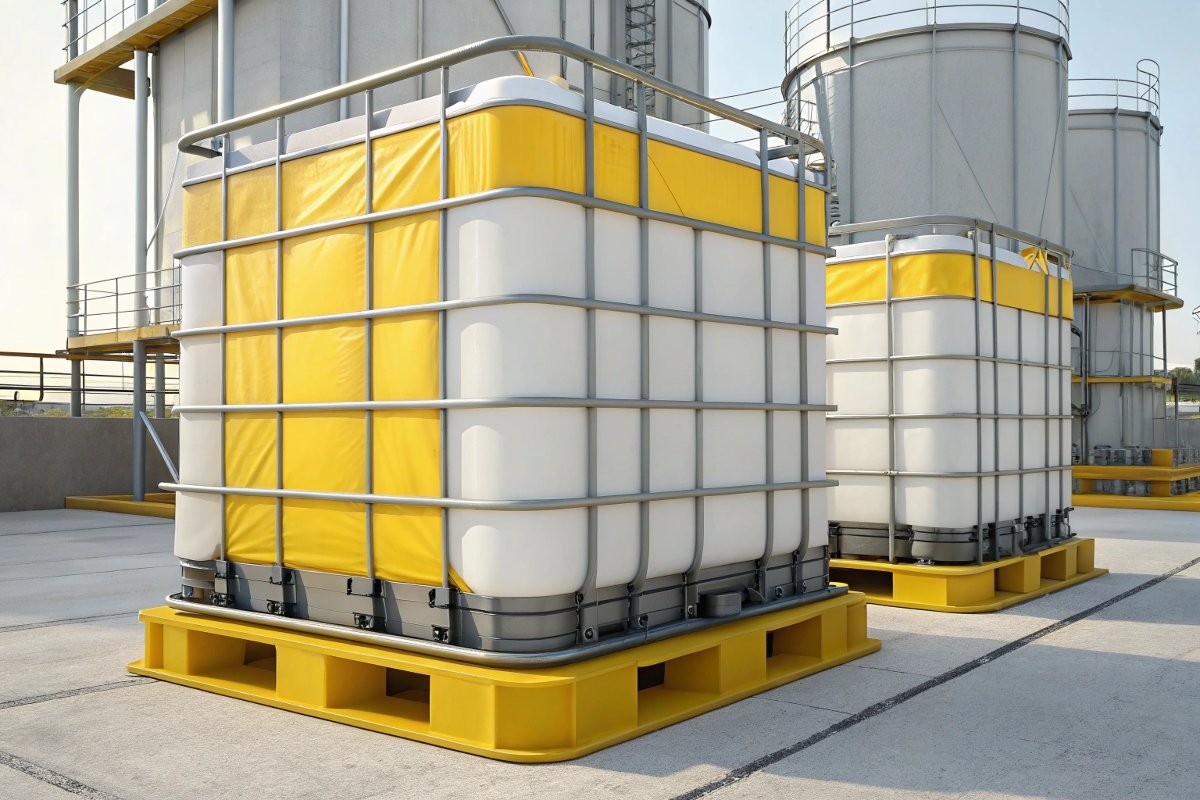
What is an IBC spill pallet?
Large-scale liquid storage presents even bigger spill risks. Standard drum pallets are often not enough. Are you looking for effective containment for your bulk containers? An IBC spill pallet is the specialized solution for safely managing Intermediate Bulk Containers.
An IBC spill pallet [21] is a specialized form of secondary containment designed to hold Intermediate Bulk Containers (IBCs) [22], which typically hold 275-330 gallons of liquid. These pallets are much larger and more robust than standard drum spill pallets, built to handle the significant weight and volume of IBCs, ensuring compliance with large-volume liquid storage regulations.
When bulk liquids are involved, the stakes get much higher. Intermediate Bulk Containers, or IBCs, are common in many large industrial operations. These "totes," as they are often called, hold a massive amount of liquid, far more than traditional drums. Because of their volume and weight, they need a dedicated containment solution. This is where IBC spill pallets come in.
From my experience, selling these heavier-duty products requires careful engineering. An IBC spill pallet is not just a bigger drum pallet. It needs a much sturdier structure to support over a thousand pounds of liquid, plus the weight of the container itself. The sump capacity is also significantly larger. For instance, an IBC spill pallet designed for a 275-gallon IBC must have a sump capable of holding at least 275 gallons – the full volume of the largest container.
I remember when the demand for IBC spill pallets started increasing. It was a direct reflection of industry growing bigger and consolidating liquid storage. It also showed a greater awareness of environmental risks associated with large spills. As Jinde Chen, I always push for solutions that not only meet regulations but also offer peace of mind. We have developed products that stand up to the most demanding industrial environments. This growth in demand for specialized products like IBC spill pallets aligns perfectly with the insight that environmental regulations and best practices from more developed economies are influencing manufacturing worldwide, including in China. It is about progress. It is about responsible industry. We are not just building products; we are supporting a global move towards better environmental stewardship.
| Feature | Standard Drum Spill Pallet | IBC Spill Pallet |
|---|---|---|
| Container Type | 55-gallon drums | Intermediate Bulk Containers (IBCs) |
| Typical Capacity | 1 to 4 drums (55-220 gallons total) | 1 to 2 IBCs (275-660 gallons total) |
| Sump Volume | 55-60 gallons (for 4 drums) | 275-330 gallons or more |
| Dimensions | Smaller footprint, square or rectangular | Much larger footprint, often rectangular |
| Weight Load | Up to 2,000 lbs (for 4 drums) | Up to 8,000 lbs or more per IBC |
| Ramp Needed | Typically not | Often optional ramps available for loading |
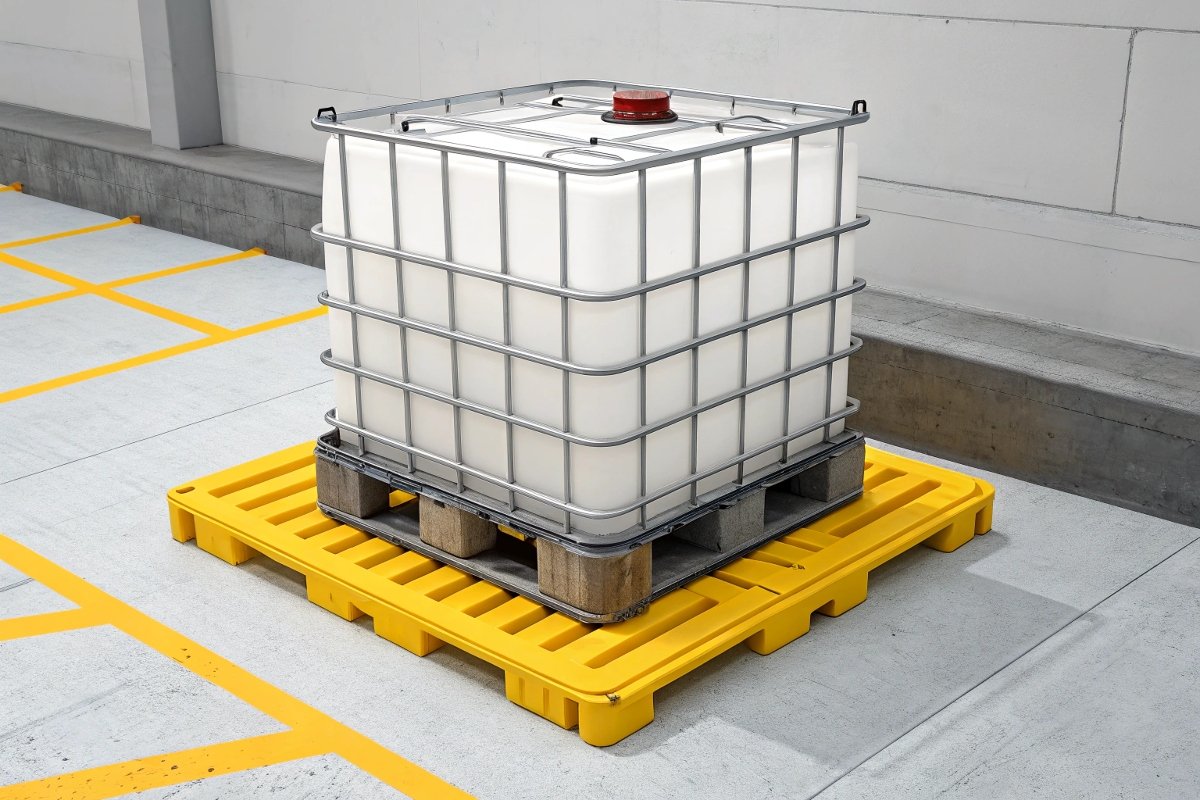
Conclusion
Spill pallets are vital for safe industrial operations. They prevent contamination, protect workers, and ensure compliance with environmental rules. From basic drum pallets to specialized IBC models, choosing the right containment is key for a safer, cleaner future.
Annotated Readings
- Spill Pallet: A a platform designed to contain leaks and drips from stored liquid containers, preventing them from reaching the environment or workplace. Source: https://en.wikipedia.org/wiki/Spill_pallet
- OSHA Rules: Regulations and standards established by the Occupational Safety and Health Administration to ensure safe and healthy working conditions. Source: https://www.osha.gov/laws-regs/regulations
- Occupational Safety and Health Administration (OSHA): A federal agency of the United States Department of Labor that sets and enforces protective workplace safety and health standards. Source: https://www.osha.gov
- Hazardous Materials: Substances that pose a risk to health, safety, or property if not properly managed, often subject to strict regulation for storage and handling. Source: https://en.wikipedia.org/wiki/Hazardous_material
- Secondary Containment: A backup system designed to catch spills or leaks from primary containers, preventing them from escaping into the environment. Source: https://en.wikipedia.org/wiki/Secondary_containment
- 29 CFR 1910.106: Part of the Code of Federal Regulations, specifically pertaining to the storage and handling of flammable and combustible liquids in general industry. Source: https://www.ecfr.gov/current/title-29/chapter-XVII/part-1910/subpart-H/section-1910.106
- PVC Coated Fabric: A textile material coated with polyvinyl chloride, commonly used in various industrial applications for its durability and resistance to chemicals and water. Source: https://en.wikipedia.org/wiki/Polyvinyl_chloride
- Containment Capacity Requirement: OSHA and EPA often specify that secondary containment must be able to hold 10% of the total volume of all containers stored, or 100% of the largest container’s volume, whichever is greater. Source: https://www.epa.gov/enforcement/spill-prevention-control-and-countermeasure-spcc-rule
- Flammable and Combustible Liquids: Liquids categorized by their flash point, indicating their susceptibility to ignition; their safe storage is critical for fire prevention. Source: https://www.osha.gov/flammable-liquids
- HAZWOPER (Hazardous Waste Operations and Emergency Response): OSHA standard 29 CFR 1910.120, outlining training and safety requirements for workers involved with hazardous substances. Source: https://www.osha.gov/hazwoper
- 29 CFR 1910.1450: Part of the Code of Federal Regulations, known as the "Laboratory Standard," which defines requirements for occupational exposure to hazardous chemicals in laboratories. Source: https://www.ecfr.gov/current/title-29/chapter-XVII/part-1910/subpart-Z/section-1910.1450
- 29 CFR 1910.22: Part of the Code of Federal Regulations specifying general requirements for maintaining safe walking and working surfaces in workplaces. Source: https://www.ecfr.gov/current/title-29/chapter-XVII/part-1910/subpart-D/section-1910.22
- Sump: The basin or reservoir integrated into spill containment products designed to collect and hold spilled liquids. Source: https://en.wikipedia.org/wiki/Sump
- Spill Deck: A low-profile, modular secondary containment platform often used to create custom containment areas for smaller containers or multiple drums. Source: https://www.seton.com/blog/spill-deck-vs-spill-pallet-whats-the-difference/
- "10%/100% Rule": A common regulatory guideline for secondary containment capacity, requiring a sump to hold either 10% of the total volume of all stored containers or 100% of the largest container’s volume, whichever is greater. Source: https://www.epa.gov/enforcement/spill-prevention-control-and-countermeasure-spcc-rule
- 40 CFR 264.175: Part of the Code of Federal Regulations under the EPA, dealing with secondary containment requirements for containers of hazardous waste. Source: https://www.ecfr.gov/current/title-40/chapter-I/subchapter-I/part-264/subpart-I/section-264.175
- Environmental Protection Agency (EPA): An agency of the U.S. federal government whose mission is to protect human and environmental health. Source: https://www.epa.gov
- Hazardous Waste: Waste with properties that make it dangerous or capable of having a harmful effect on human health or the environment. Source: https://www.epa.gov/hw/learn-basics-hazardous-waste
- Groundwater Contamination: Pollution of water found beneath the Earth’s surface, often caused by industrial spills or improper waste disposal. Source: https://en.wikipedia.org/wiki/Groundwater_pollution
- Spill Berm: A portable or fixed barrier used to contain liquids and prevent spills from spreading, often used in conjunction with other spill control products. Source: https://en.wikipedia.org/wiki/Containment_boom
- IBC Spill Pallet: A heavy-duty secondary containment unit specifically designed to safely store Intermediate Bulk Containers (IBCs). Source: https://www.spillcontainment.com/ibc-spill-pallets/
- Intermediate Bulk Container (IBC): A reusable industrial container designed for the transport and storage of bulk liquid and granulate substances, typically larger than drums but smaller than tanks. Source: https://en.wikipedia.org/wiki/Intermediate_bulk_container
